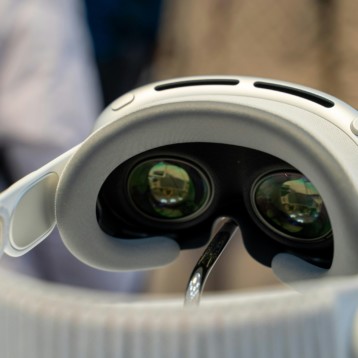Vibration and sound technology is commonplace in video gaming controllers, PC joysticks, gamepad peripherals, and gaming seats, to accentuate game play. The Philips Force Feedback-Haptics Jacket was designed around a series of physical actuators that directly affect the user, instead of sound or vibration-based motion, which are currently utilized in modern game systems.
The Force Feedback Jacket has 64 independently controlled actuators distributed throughout the jacket including the torso and both arms. The actuators are paired in arrays of four, with each array sharing its own microprocessor – these are linked via a serial bus. Each actuator is capable of being cycled on and off at a rate of 100 times per second, which is fast enough to outpace the refresh rate of a computer screen or a TV set.
With the bulk of the actuators centered around the torso, the arms receive sufficient stimulation with eight actuators per sleeve. Paul Lemmens, Senior Research Scientist with Philips, reports “The number of total actuators used is sufficient due to the skin’s neural wiring and the way the brain perceives touch. Even though the jacket only has eight actuators along the length of each sleeve (four in front and four in back) spaced about 15 centimeters apart, those actuators can create the sensation that the arm is being tapped in several spots between the motors via a phenomenon called the cutaneous rabbit illusion.”
Although the jacket can simulate outside forces, translating kicks and punches is not what the actuators are meant to do. The purpose is investigating emotional immersion through the study of the effects of touch on a movie viewer’s emotional response to what the characters are experiencing in the film being watched.
The power needs of the Force Feedback Jacket are quite small. Two AA batteries can power the jacket for one full hour, even if the system was continuously driving 20 of the motors simultaneously.
At this time, there are no plans for release of the jacket, or for the development of a matching pair of pants.
TFOT has recently covered a story where a haptic interface gave computer users an accurate artificial sense of touch in “Magnets Power Haptic Computer Interface.” TFOT has also covered several stories on other high-tech wearable garments, including “Vital Jacket,” “Self Charging Clothes,” and “TRON – High Tech ID System,” used in military applications.
You may find more information on Philips’ research page.










